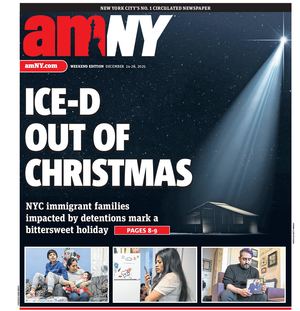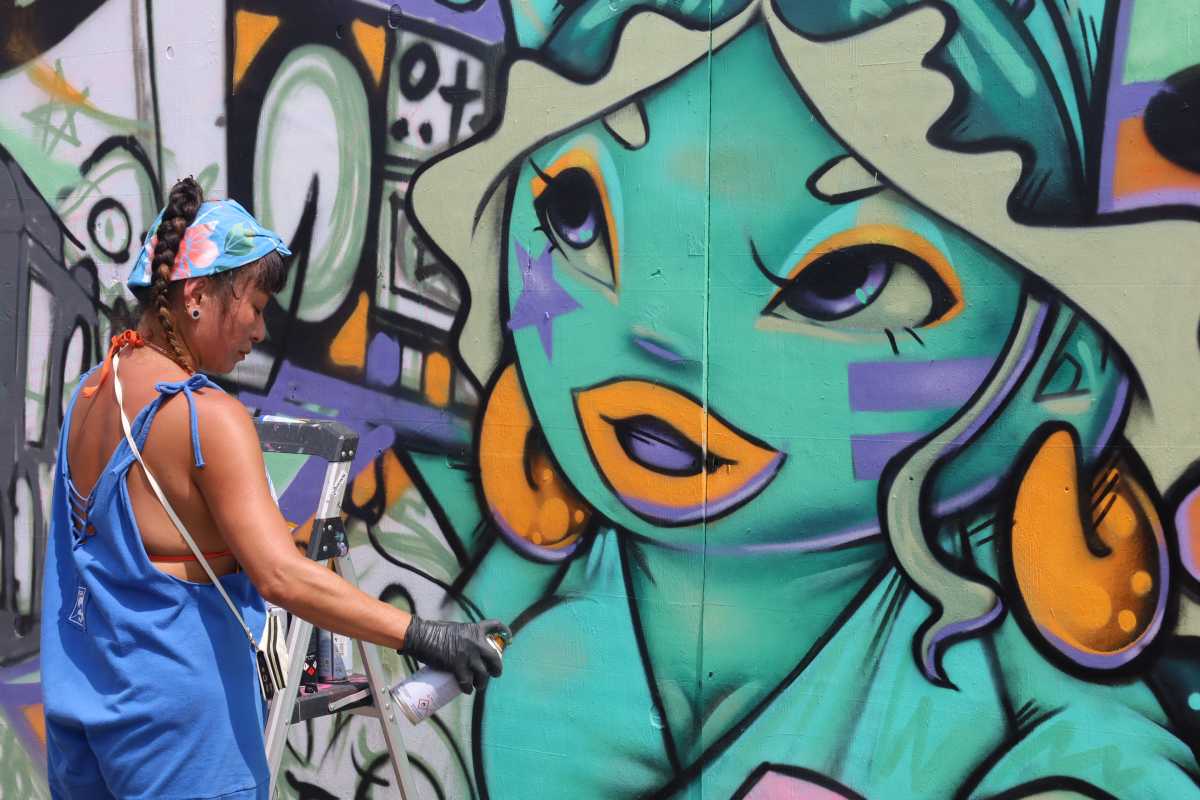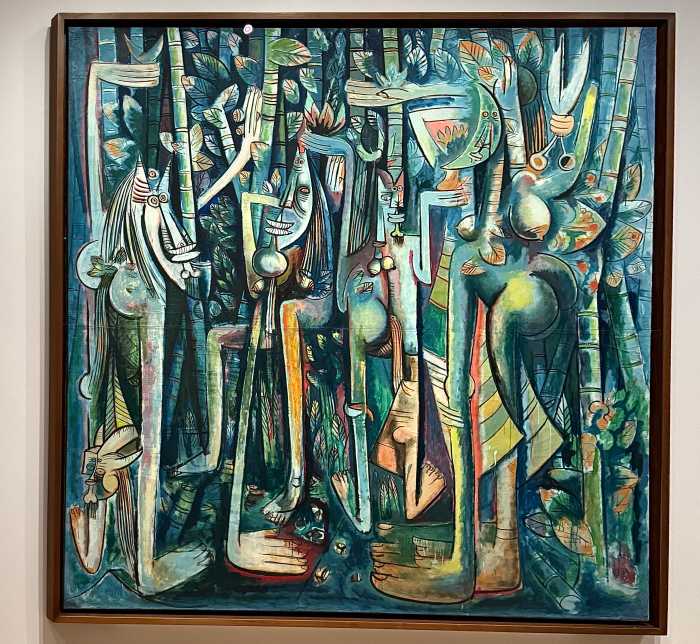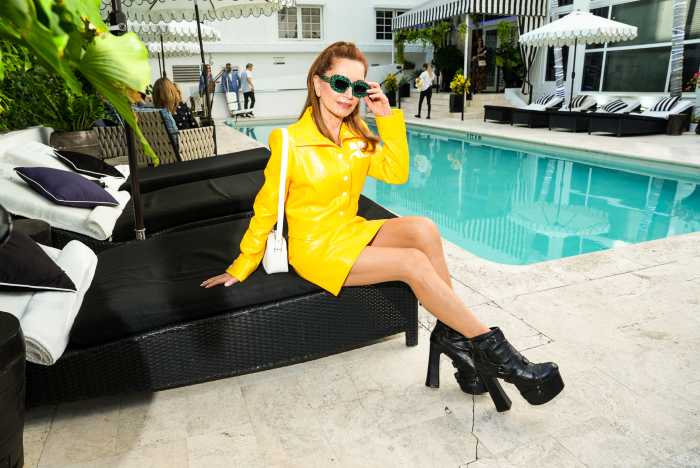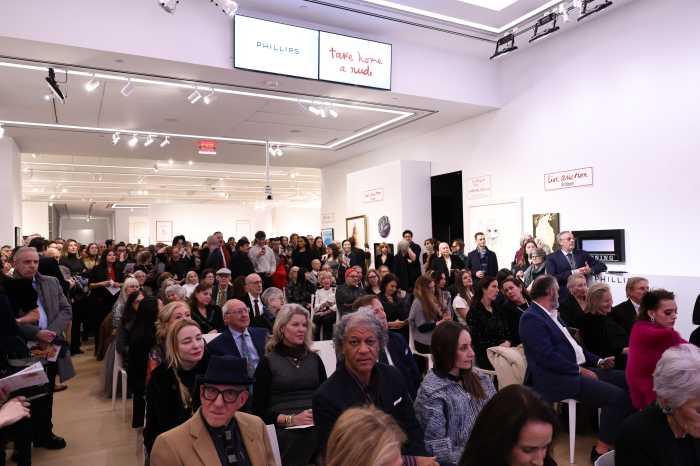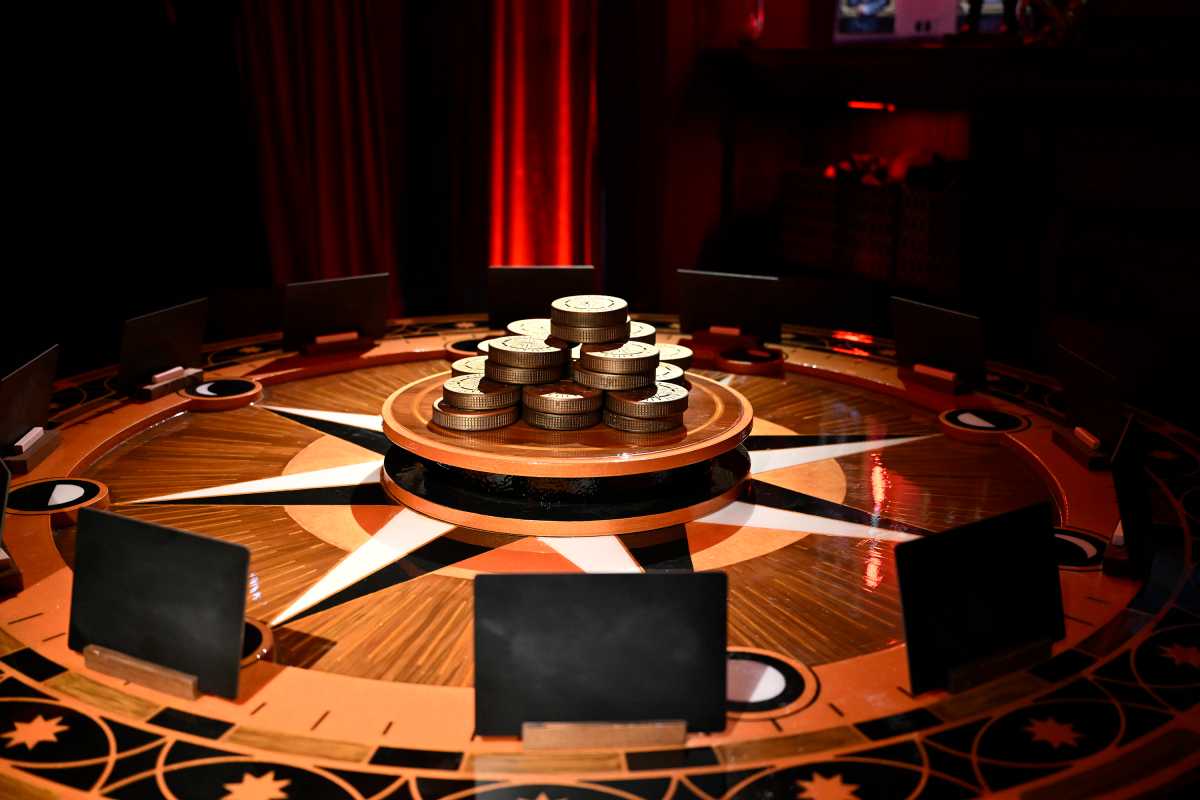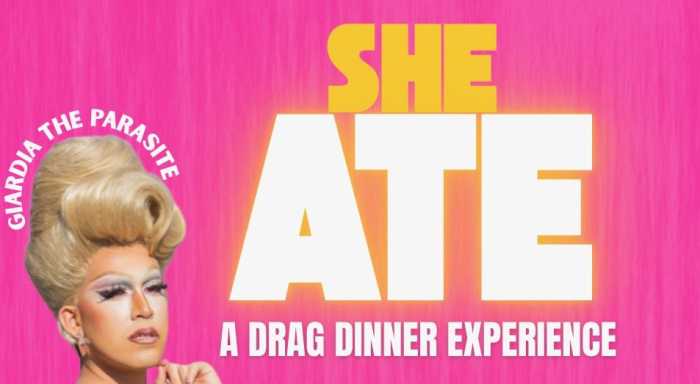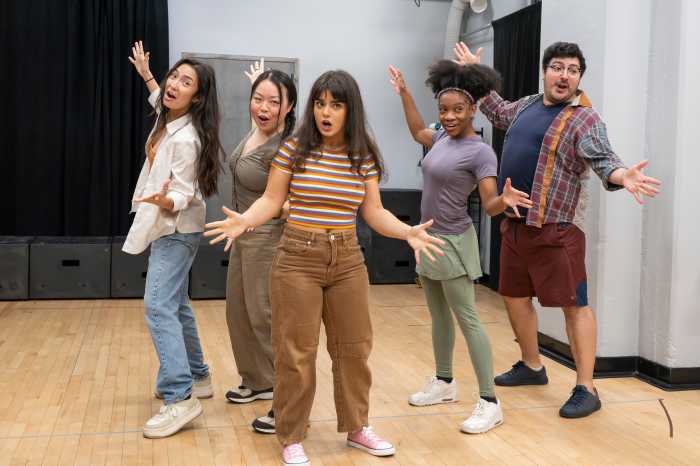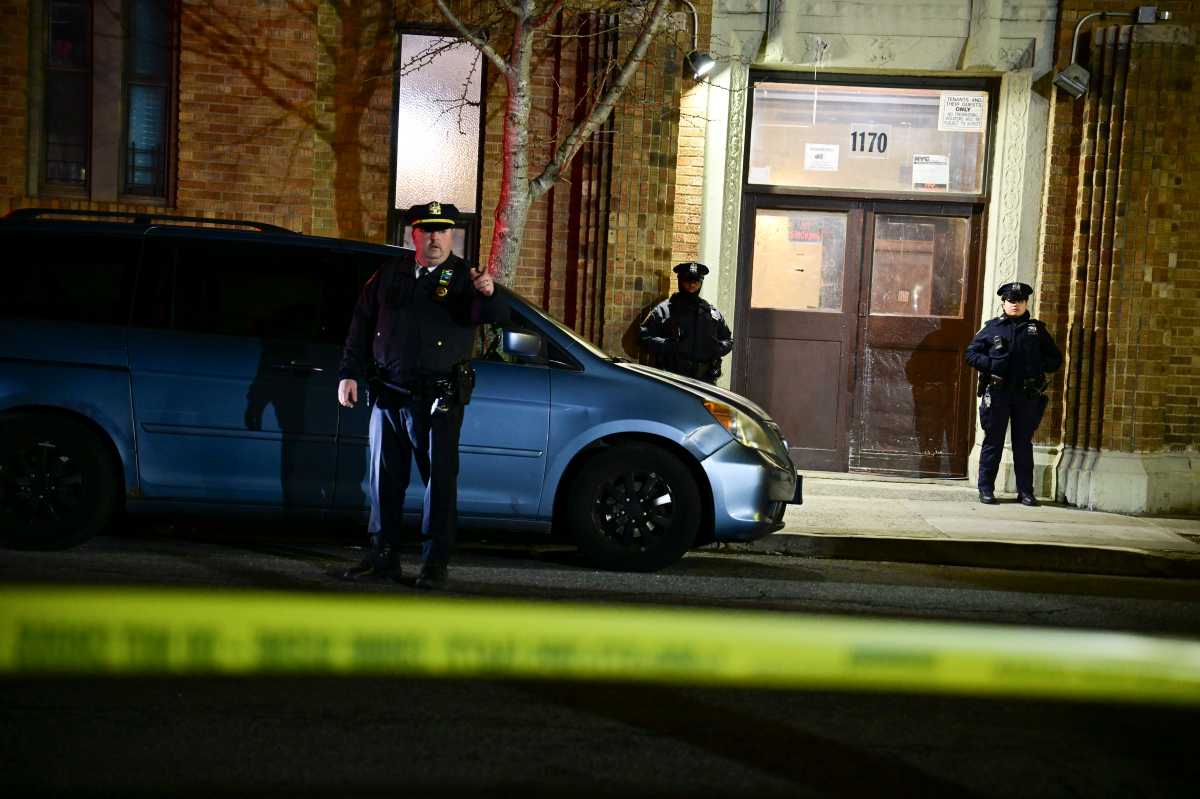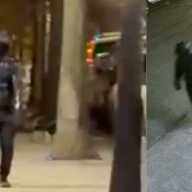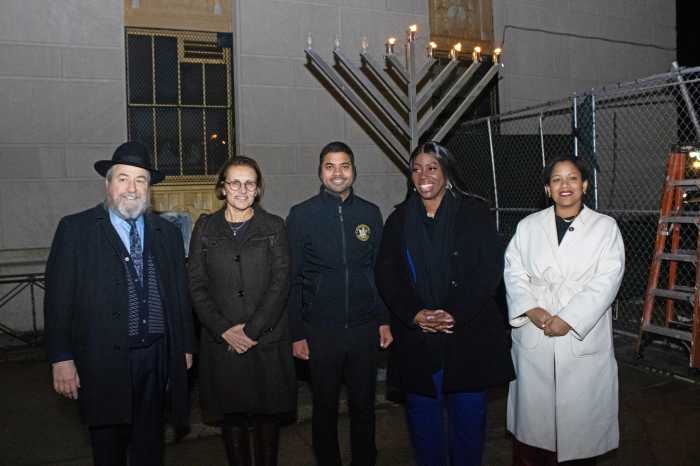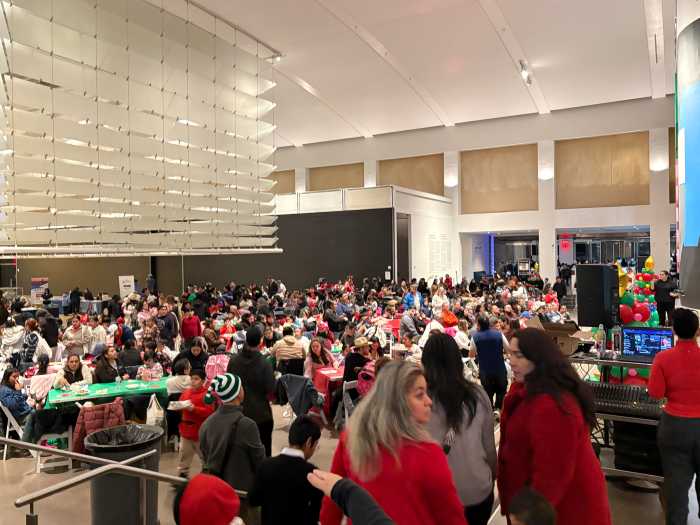With NYC in a perpetual state of construction, scaffolding and drab green construction barriers have become a permanent part of the city’s infrastructure, at times, fostering a hub for homelessness and open drug use.
For more than a decade, the square block of 125th Street and Lexington Avenue — down to 124th Street and east to Third Avenue — has sat vacant, surrounded by unsightly wooden walls. The empty lot is part of the MTA’s Second Avenue Subway extension with expected completion set to take place between 2030 and 2039.
In the meantime, the Grandscale Mural Project is working to unite the community by turning eyesores into artwork.
On July 26, dozens of artists convened in the historic Harlem location, working to beautify the neighborhood. Loud House music filled the air and piraguas were freely flowing. Passersby stopped to talk to the painters and take pictures. Smiles were widespread and people were dancing in the street. The plan was working.
“These are really unsightly when we’re not using them in a creative way and it really did help to transform the ambiance a little bit of this community, which we really needed,” City Council speaker Diana Ayala, who represents the idea, told amNewYork.”It’s part of our efforts to kind of help, not only to clean it up, but to uplift the community, because it didn’t feel colorful, it didn’t feel welcoming.”
Ayala was part of the team that helped launch the City Canvas program, which allows artwork on temporary protective structures. Initiated as a temporary pilot and made permanent by the adoption of Local Law 163 in 2021, the program went into effect in September 2023.
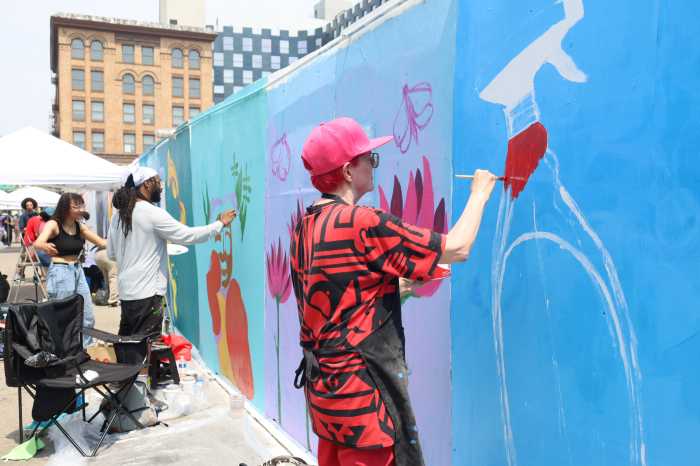
However, the Grandscale Mural Project – which started its beautification with the plaza underneath the Metro North stop at 125th Street and Park Avenue – has been working independently since 2019.
“We ended up doing it illegally. We weren’t trying to do it illegally, but then the city was honestly catching up to us,” said the project’s founder, Carey King. “ I mean, there are so many people that pass through this area, residents, commuters, and then we have like thousands of people per day coming from the shelter, 35 bus drops there, 2000 people that come, and then we have all the clinics, and so there’s a lot of people in the street. So, it’s for everybody. It’s really just to unify everybody, and we’ve seen like little kids stop and they’ll wanna interact with the artists.”
The mural project started as an offshoot of Uptown Grand Central, a grassroots initiative started by local business owners in 2013 who were tired of the vagrancy and drug use in the neighborhood. Its name is meant to bring awareness to the fact that the only Manhattan stops along the Metro-North are Grand Central Station and 125th Street, believing the latter deserves the same care and opulence as the former. What started with about 40 to 50 local artists who either lived in the community or had ties to it has grown to include upwards of 100.
Shiro was working on her mural of Mimi, a character she created when she was a child. Shiro often felt isolated due to being deaf in one ear and hard of hearing in the other. She created Mimi out of loneliness.
“She can be anything,” she said with a smile. In her Harlem mural, Mimi is the Statue of Liberty.
Shiro lives in Bushwick and moved to the U.S. from Japan after watching the 1983 hip hop movie “Wild Style,” which captured the burgeoning culture of tagging, graffiti and breaking, in NYC. She was working as a nurse when she was inspired to save her money and make it as a spray paint muralist in NYC. She moved to Brooklyn in 2002 and has been a professional artist since.

An artist who simply goes by PHES, grew up in Harlem and was working on a mural of Paul Robeson, a genius savant who was a singer, actor, professional football player and political activist who attended several prestigious colleges and was an important figure of the Harlem Renaissance.
“I thought of somebody that represents the art, the struggle and all, and the whole story, the history of Harlem as well. Paul Robeson to me is that artist that I would like to lift up as well,” said PHES who is also the program director at ArtBridge, a non-profit organization working specifically to transform construction barriers into a vibrant, if temporary, piece of the neighborhood in where it resides.
“I actually think public art brings attention to what’s going on in this corner,” PHES added.
Residents have long complained of the drug refuse and loitering in the community. “’Scared when I go out’: East Harlem residents urge action against drug crisis” reads one headline published by PIX11 earlier this month. “How one block became a symbol for urban disrepair and hope” reads another by New York Times published last April.
But the area gained notoriety from the 1967 song “I’m Waiting for the Man” by Velvet Underground, which glorifies a person waiting for their drug dealer on 125th Street and Lexington Avenue. Nearly 60 years later, the problem persists.
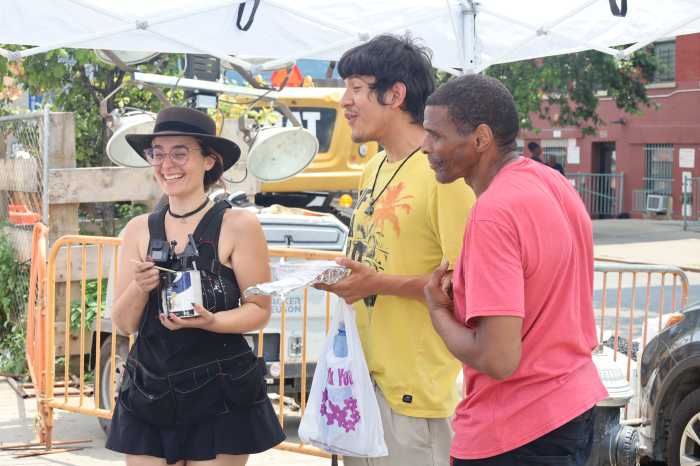
Skinny who lives in West Harlem was hanging out in a lounge chair opposite the mural project and said, “there’s nothing here” when asked what he felt was the biggest issue in the community, adding that the lack of businesses invites loitering and rambunctious behavior.
Many of the artworks represented themes of love, unity, resilience and mental health, using vibrant colors to bring brightness and cheer to the area and connect the people to a space filled with bleakness over the years.
This summer, the Grandscale Mural Project launched on June 28 with an expected completion date of Aug. 30.
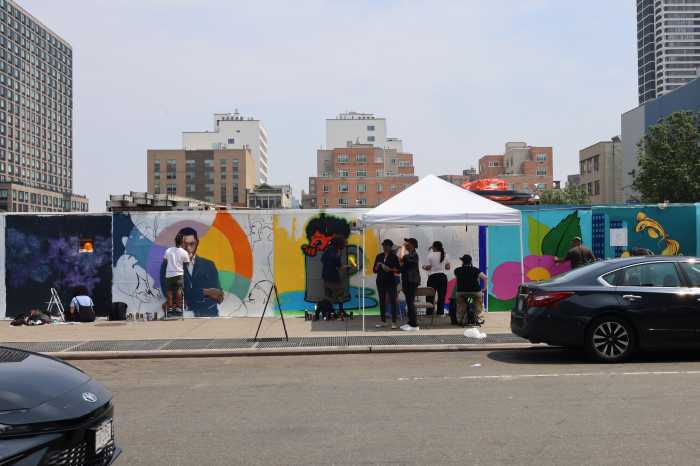
Reach ET Rodriguez at etrodriguez317@gmail.com. For more coverage, follow us on Twitter, Facebook and Instagram @amnewyork
